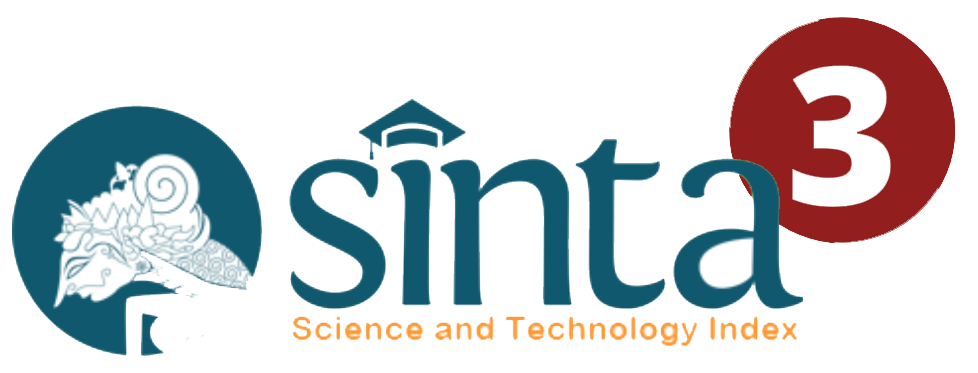INCREASING FORMULATE AND TEST CONJECTURE MATH COMPETENCE AND SELF CONFIDENCE IN USING THE DISCOVERY LEARNING TEACHING MATH
DOI:
https://doi.org/10.22460/pej.v1i1.488Abstract
The main problem of this study is the lack of ability to formulate a conjecture of mathematics students in grade 5 elementary schools, lack of ability to test the conjecture of mathematics students in grade 5 elementary school and a low attitude of self-confidence of students Primary 5. This study uses quantitative and qualitative approach and methods of quasi and descriptive. The study population was the fifth-grade elementary school students in District Ciparay Bandung regency. The sample consisted of 66 students divided into 33 classes of students in the various groups of experiment V-A and 33 students in the class V-B as the control group. The instrument used comprising written tests on multiplication and division of fractions, and ratio and scale, attitude scale questionnaire of self-confidence, observation, and interviews. Quantitative analysis was performed on average pretest and posttest ability to compose and mathematical conjecture test using the t-test and Mann Whitney. Qualitative analysis was also conducted on the attitude scale questionnaire score self-confidence confirmed by observation and interview. The results pointed to an that mathematics learning by using discovery learning can improve students' mathematical formulate the conjecture. Learning mathematics using discovery learning can also improve students' mathematical test conjecture. The self-confidence of students in the experimental class was obtained using discovery learning math learning is good.References
Dariyo, A. (2004). Psikologi perkembangan remaja. Bogor: Ghalia Indonesia.
Depdiknas. (2007) Permendiknas Nomor 22 Tahun 2006 tentang Standar isi mata pelajaran matematika untuk satuanuntuk semua jenjang pendidikan dasar dan menengah. Jakarta: Depdiknas.
Hebaish, S. M. (2012). The correlation between general self-confidence and academic achievement in the oral presentation course. Theory and Practice in Language Studies, Vol. 2, No. 1, page. 60-65.
Jacinta F.R. (2010). Memupuk rasa percaya diri. [Online] diakses dari http://www.e psikologi.com/dewasa/161002.htm [diunduh 11 mei 2016]
Kementrian Pendidikan dan Kebudayaan.(2013). Model pembelajaran penemuan (discovery learning). Jakarta.
Leron,U. (2004) Mathematical thinking and human nature: consonance and conflict. Technion-Israel Instituteof technology. procceding of th 28th conference of the internasional group for the psychology of mathematics education, 2004. Technion, Israel institute of technology, vol.3 page 217-224.
Hannula. (2004). Development of understanding and self-confidence in mathematics, grades 5-8. Proceding of the 28 th Conference of The International Group for The Psychology of Mathematics Education. Vol 3 page 17-24, [Online] diaksesdarihttp://files.eric.ed.gov/fulltext/ED489565.pdf [diunduh 10 Mei 2016]
NCTM. (2000). Principles and Standards for School Mathematics. The National Council of Teachers of Mathematics, Inc.
Pierce, J. & Gardner, D. (2004). Self-Esteem within the work and organisational context: a review of the organizationbased self- esteem literature. Journal of Management. 30 (5), page 591-622.
Polya, G.( 1953). Matemáticas y razonamiento plausible, Tecnos, Madrid [1966].
proof’, in A. Olivier and K. Newstead (eds.).Proceedings of the 22th International Conference of PME (Vol. 2), Stellenbosch, South Africa, pp. 345–352.psychology of learning and motivation San Diego: Academic Press. (Vol. 43, pp. 215-266).
Recio, A. M. & Juan D. (2001). Institutional and personal meanings of mathematical proof. Educational Studies in Mathematics 48,2001, page 83–99.
Ruseffendi. E.T.(1991) Pengantar kepada membantu guru mengembangkan kompetensinya dalam pengajaran matematika untuk meningkatkan CBSA. Bandung: Tarsito.
Shadiq, F. (2007). Penalaran atau reasoning perlu dipelajari para siswa di sekolah?.[online] diaksesdarihttp://prabu.telkom.us/2007/08/29/penalaran-atau-reasoning [diunduh 11 Mei 2016].
Shadiq, F.(2004).Pemecahan masalah, penalaran dan komunikasi.Disampaikan pada DiklatInstruktur/Pengembang Matematika SMA Jenjang Dasar Tanggal 6 s.d. 19 Agustus 2004 di PPPG Matematika. Yogyakarta: Departemen Pendidikan Nasional Direktorat Jenderal Pendidikan Dasar dan Menengah Pusat Pengembangan Penataran Guru (PPPG) Matematika Yogyakarta.2004,hal.2.
Sumarmo, U. (2003).Berfikir matematik tingkat tinggi: apa, mengapa, dan bagaimana dikembangkan pada siswa sd dan sm dan mahasiswa calon guru. MakalahSeminar Nasional dan Lokakarya, FKIPUniversitas Sriwijaya, Palembang 20-21Agustus 2003
Widyantini, T.(2012). Penerapan model pembelajaran langsung dalam mata pelajaran matematika SMP/MTs. Pusat Pengembangan Dan Pemberdayaan Pendidik Dan Tenaga Kependidikan (PPPPTK) Matematika.
Wijaya. A (2012). Pendidikan matematika realistic: suatu alternative pendekatan pembelajaran matematika. Yogyakarta: Graha Ilmu.










